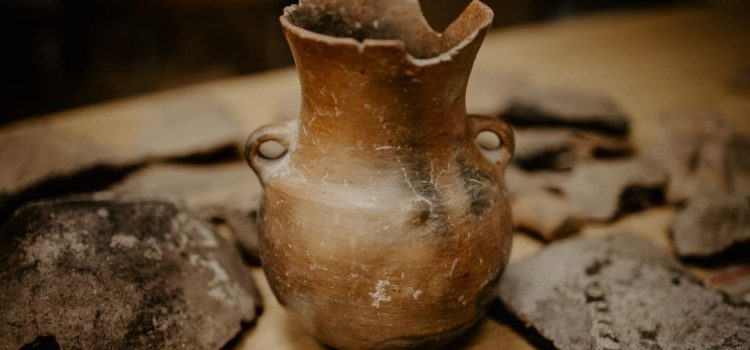
This is a free excerpt from one of Shortform’s Articles. We give you all the important information you need to know about current events and more.
Don't miss out on the whole story. Sign up for a free trial here .
Should museum artifacts be repatriated? Who actually owns the artifacts? Are there any legal obligations to return artifacts?
A theft scandal at the British Museum has fueled the debate over repatriating artifacts. Those in favor of repatriation say that many objects were stolen or taken unethically. Opponents say museums are the safest places for them and it’s often unclear who they belong to.
Below we’ll take a look at both sides of this complex argument.
Museums Face Pressure to Return Artifacts
In August, the British Museum announced that around 2,000 objects in its collection had gone missing over the past decade. Some had been auctioned off on eBay for a fraction of their value. Evidence pointed to the theft being an inside job: The suspect, a curator of Greek antiquities, was fired. The museum’s director subsequently resigned, acknowledging he’d been too slow to act on evidence he’d received in 2021.
This incident comes in the context of mounting pressure on museums over repatriating artifacts in their collections.
1. Arguments for Repatriation
The idea that culturally important objects should be returned to their communities isn’t new. In the early 1800s, soon after Lord Elgin had brought the Parthenon marble sculptures to Britain, one British parliamentarian called the movement of the sculptures an “act of spoliation.” As part of a vocal minority, he suggested that Britain hold the sculptures in trust until Athens asked for them back.
The main reasons people give for repatriating cultural property are as follows.
They’re Stolen Objects
Those calling for return point out that in many cases, these objects were taken without permission, often as colonial plunder or the spoils of war. Even the British Museum acknowledges, for example, that the Benin Bronzes were looted amid “widespread destruction and pillage” in a vengeful operation by British soldiers. And, even if something was legally acquired at the time, those historical laws may not reflect our contemporary sense of what’s right and wrong.
People Have a Right to Their Own Cultural Heritage
Those in favor of artifact repatriation argue that objects that were created within a particular culture belong to that culture. Many museum pieces are imbued with sacred meaning that gets lost when they’re viewed out of context. For the people of Rapa Nui (Easter Island), for example, the stone moai statue standing in the British Museum contains the spirit of an ancestor who now can’t do his job of protecting his descendants on the island. Returning these objects also supports members of the community to pass on their culture to the next generation.
Holding the Objects Perpetuates Colonial Damage
Many contested pieces are the spoils of colonialism, so some argue that holding onto them perpetuates the damage done by colonization. One Egyptian scholar has called the British Museum’s refusal to return the Rosetta Stone as “a symbol of Western cultural violence against Egypt.”
Repatriation Strengthens International Relationships
Because there’s no overarching legal obligation to return objects, returning them is a gesture of goodwill. As such, it opens avenues for international cooperation and understanding. When Germany returned 20 Benin Bronzes to Nigeria last year, for example, foreign minister Annalena Baerbock said she hoped the return would pave the way for improved trade relations between the countries. US law enforcement efforts against trafficking cultural property are also explicitly framed as diplomatic efforts.
2. Arguments Against Repatriation
Museums, and some politicians, have countered that it’s better for both the objects and humanity as a whole to have the objects stay where they are.
The Objects Are Safer in Museums
Museums have long held that they’re the safest place for culturally important objects. They point out, for example, that the sculptures that remained at the Parthenon site after Elgin took the rest were damaged by vandalism, weathering, and air pollution, and that unstable or war-torn countries often don’t have adequate facilities for the storage and display of fragile objects.
In answer, some of the countries soliciting returns have stepped up their facilities. Greece built a state-of-the-art museum to receive the Parthenon sculptures in 2009—but they’re still waiting for a marble delivery.
It’s Not Always Clear Where the Objects Belong
Cultures and national boundaries shift over time. These changes can make it hard to determine where an object should be returned to—where does an object belong if the culture that created it no longer exists?
Returning objects may also break the connection of diaspora communities to their home countries. One group in the US, for example, is suing to block the Smithsonian’s repatriations because members of the local community are descended from slaves traded at ports in the Kingdom of Benin. The plaintiffs say the Benin Bronzes are part of their heritage and therefore shouldn’t be removed.
Museums Should Teach Us About Humanity as a Whole
Another common argument is that museums should tell “the story of our common humanity,” and to that end, they need to showcase the diversity in human cultures. Displaying creations from all around the world and from different historical eras gives visitors a unique picture of how different parts of human history are interconnected.
Repatriating Is Against the Law (or at Least Legally Complicated)
There’s currently no framework within international law that governs the return of cultural property. The 1970 UNESCO Convention outlined a broad framework for preventing the trafficking of antiquities starting in 1970 and was eventually joined by 143 states.
The 1995 UNIDROIT Convention, however, which introduced clearer legal guidelines, only covers circumstances in which there’s evidence the objects were illegally obtained. It’s also only been joined by 54 states, with big receiver countries like the US, the UK, Japan, and Germany absent.
UK museums can further cite national laws like the British Museum Act of 1963 and the National Heritage Act of 1983, both of which bar museums from letting go of property in their collections. Legal analyst Tatiana Flessas argues, however, that these laws aren’t set in stone; with some political will, they could easily be overturned.
Returning Contested Objects Will “Open the Floodgates”
A final fear is that if objects are returned to their place of origin, museums will have nothing left to display. (This argument is most convincing when made on behalf of smaller museums: The British Museum displays only 1% of the eight million objects in its collection.) However, while most museums won’t literally be left empty, they may suffer in the future when potential donors are scared away because they don’t have the right paperwork.
A Changing Tide
Repatriation efforts have picked up momentum in the last five years. Just this year, the following high-profile repatriations have already taken place:
- In January, an ancient green sarcophagus was returned to Egypt by the Houston Museum of Natural Sciences.
- In April, sculptures and traditional khipus knotwork were returned to Peru by the United States.
- In July, 478 looted objects were returned to Indonesia and Sri Lanka by the Netherlands government.
- In September, over 170 objects were returned to Australia’s Anindilyakwa community by the Manchester Museum.
- In September, nearly 1,300 pre-Columbian artifacts were returned to Mexico by California’s San Bernardino County Museum.

Want to fast-track your learning? With Shortform, you’ll gain insights you won't find anywhere else .
Here's what you’ll get when you sign up for Shortform :
- Complicated ideas explained in simple and concise ways
- Smart analysis that connects what you’re reading to other key concepts
- Writing with zero fluff because we know how important your time is






💯